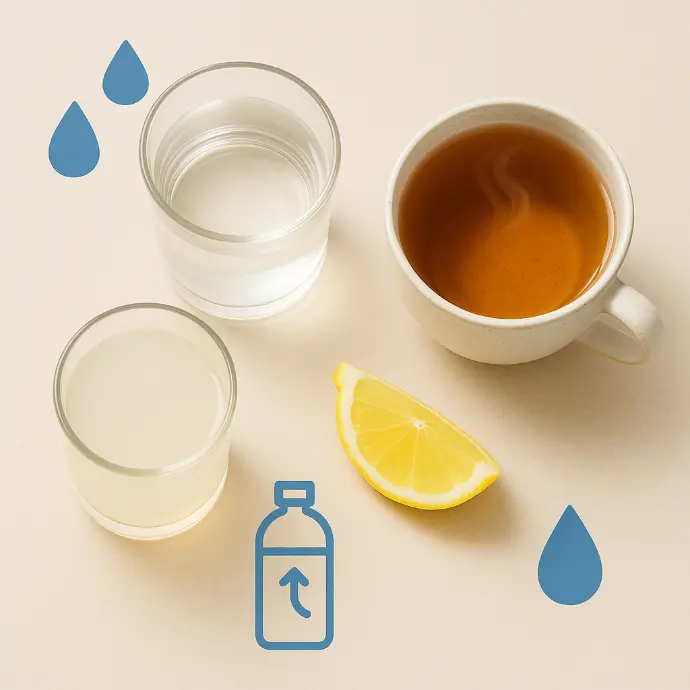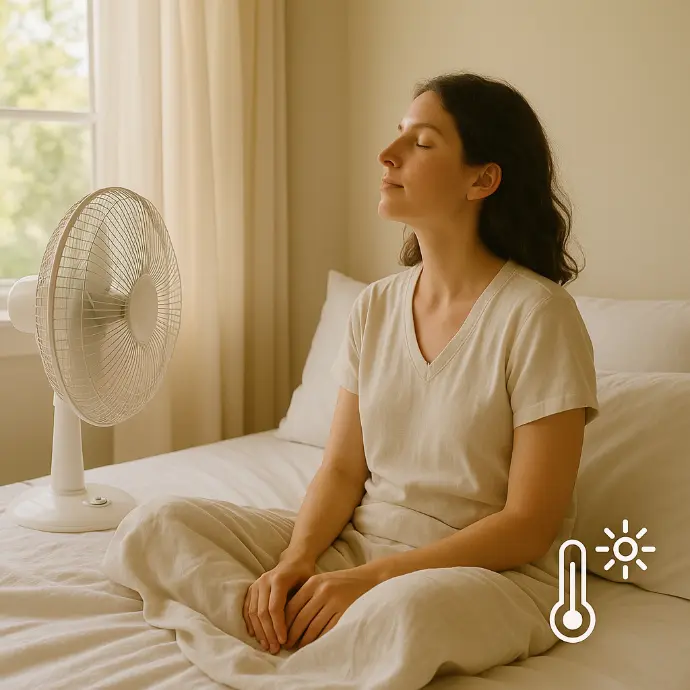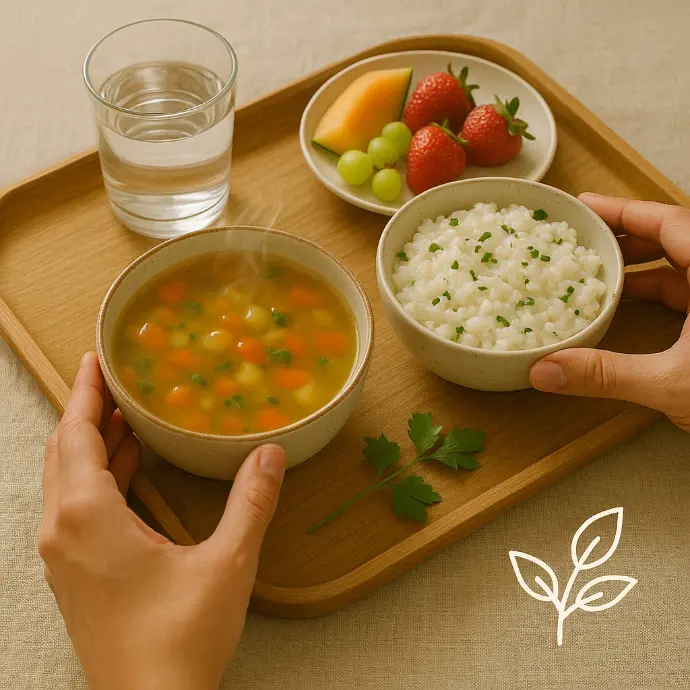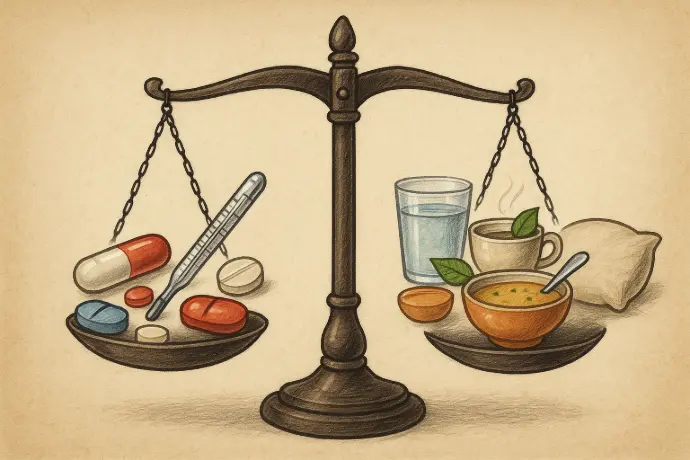
When your body temperature rises above normal, it means your immune system is working hard to fight off an infection. That’s what we call a fever. While mild fevers can often go away on their own, high fevers can leave you feeling drained, weak, and uncomfortable.
The good news? In many cases, you can reduce a high fever right at home, using natural and safe methods without rushing to the doctor or depending only on medicines. Let’s take a look at 7 easy and effective tips to help you lower a high fever at home and feel better fast.
What is a High Fever?
Before diving into remedies, let’s understand what counts as a high fever:
● Normal body temperature: around 98.6°F (37°C)
● Low-grade fever: 99–100.4°F (37.2–38°C)
● High fever: Above 101°F (38.3°C)
If your temperature is going above 102°F (39°C), it's important to act quickly to avoid further discomfort and complications.
1. Stay Hydrated – Drink Plenty of Fluids

When you have a fever, your body loses fluids through sweating. Dehydration makes the fever worse and can even slow down your recovery.
What to do:
● Sip water regularly (even if you don’t feel thirsty).
● Drink coconut water for natural electrolytes.
● Try warm herbal teas like ginger or chamomile.
● Avoid sugary or caffeinated drinks.
Staying hydrated helps cool your body from the inside out.
2. Use a Cold Compress

Applying a cool, damp cloth on your forehead or back of your neck can provide instant relief from high fever.
What to do:
● Soak a clean towel in cold water, wring it out, and place it on your forehead.
● Repeat every few minutes.
● You can also wipe your arms, legs, and chest with a wet sponge for a cooling effect.
This helps draw out heat and lowers body temperature naturally.
3. Take a Lukewarm Bath or Sponge Bath

You might think an ice-cold shower will help, but it can actually cause shivering, which raises your temperature. A lukewarm bath is much better.
What to do:
● Fill a bathtub with lukewarm (not cold) water.
● Soak for 10–15 minutes.
● If a bath is not possible, give a sponge bath using lukewarm water.
It gently brings down the fever and soothes body aches at the same time.
4. Dress Light and Rest in a Cool Room

Wearing heavy clothes or covering yourself with too many blankets traps heat and prevents your body from cooling down.
What to do:
● Wear light, breathable clothes like cotton.
● Use only a thin bedsheet instead of a heavy blanket.
● Keep the room well-ventilated with a fan or open windows.
Let your body release heat naturally instead of trapping it.
5. Eat Light, Nutritious Food

When you have a high fever, your digestion slows down. Heavy, oily foods can make you feel worse. Instead, eat light and healthy meals that are easy to digest.
What to eat:
● Warm chicken or vegetable soup
● Boiled rice with curd or dal
● Steamed vegetables
● Fruits like oranges, watermelon, apples, and papaya
Food fuels your immune system. Choose wisely and eat in small portions.
6. Try Natural Fever-Reducing Remedies

Some traditional home remedies can help lower fever and support healing especially when paired with rest and fluids.
Effective natural remedies:
● Tulsi (holy basil) tea: Reduces body temperature and boosts immunity.
● Ginger tea: Helps fight infections and has a warming effect.
● Raisins water: Soak 10–12 raisins in water overnight and drink it the next morning. Helps detox and reduce fever.
● Apple cider vinegar: Soak a washcloth in a mixture of vinegar and water and place it on your forehead or feet.
These home remedies can gently support your body’s healing process.
7. Get Lots of Rest

Last but most important rest is medicine. Fever is your body’s way of telling you to slow down and heal.
Why rest matters:
● It allows your body to focus on fighting the infection.
● It conserves energy and supports your immune system.
● Overexerting yourself can make symptoms worse and delay recovery.
Take naps, avoid screens, and let your body do the healing.
When to See a Doctor

Home remedies are helpful, but don’t delay medical care if:
● Fever is above 103°F (39.4°C) and doesn’t come down
● Fever lasts more than 3 days
● You have a severe headache, rash, or stiff neck
● You feel confused, very weak, or short of breath
Especially in children, elderly people, and people with other health issues, fever can be dangerous.
Fever is a Friend Not a Foe

We often think of fever as something scary or harmful. But in reality, fever is your body’s natural defense a sign that your immune system is hard at work, fighting off invaders like bacteria or viruses.
What matters is how you respond. Popping pills might bring temporary relief, but your body needs more than that. It needs hydration, nutrition, rest, and gentle care.
By using these 7 easy home tips, you can support your body in healing naturally, safely, and effectively. So next time you or your loved one faces a high fever, don’t panic. Be calm, act smart, and trust nature's healing power.
Because sometimes, the simplest things at home can be the most powerful medicine.
Thank You...